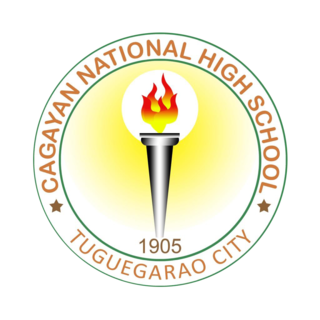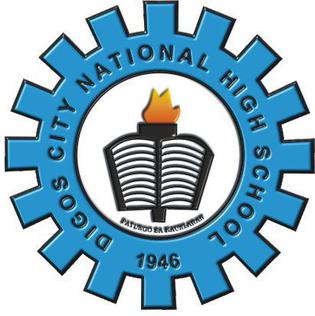Philippine Science High School Southern Mindanao Campus is the first regional campus of the Philippine Science High School System, a specialized public high school in the Philippines. It caters to scientifically and mathematically gifted high school students from all over the country especially those in Mindanao. It is located in Barangay Sto. Niño, Tugbok District, Mintal, Davao City.
The Philippine Science High School Western Visayas Campus (PSHS-WVC), one of the campuses of the Philippine Science High School System, is located at Brgy. Bito-on, Jaro, Iloilo City, Philippines. Established in 1993, the school admits and grants scholarships to students who are gifted in the sciences and mathematics. Most of the scholars are from Western Visayas which covers the provinces of Aklan, Antique, Capiz, Guimaras, Iloilo and Negros Occidental, as well as the MIMAROPA, which includes the provinces of Occidental Mindoro, Oriental Mindoro, Marinduque, Romblon and Palawan. Until the establishment of PSHS Central Visayas in 2009, the campus also catered to the students from the Central Visayas provinces of Bohol, Cebu, Negros Oriental and Siquijor. The former campus director and present executive director, Dr. Josette T. Biyo, has an asteroid named after her, 13241 Biyo.

Regional Science High School for Region 1 (RSHS) is a Magnet school of the Department of Education (Philippines), established in 1994 by virtue of DECS Order No. 69,s.1993. The school has a curriculum that specializes in science and research.
Education in the Philippines is provided by public and private schools, colleges, universities, and technical and vocational institutions in the country. Funding for public education comes from the national government. For the academic year 2017–2018, about 83% of K–12 students attended public schools and about 17% either attended private schools or were home-schooled.

The Regional Science High School for Region VI (formerly Aklan Development High School / Science Development High School of Aklan / Science Development National High School is a public secondary science school supervised by the Department of Education. It is located in Old Buswang, Kalibo, Aklan, Philippines.

Cagayan National High School, abbreviated as CNHS and locally known as Cagayan High, is the universal high school of Region 2. It is located in Taft Street, Tuguegarao City, Cagayan, Philippines. Established in 1905, it is the oldest public secondary level school in Cagayan and the province's premier secondary school.

The Zamboanga del Norte National High School (ZNNHS) is a public high school under the Department of Education of the Philippines in Dipolog City, Zamboanga del Norte, Mindanao, Philippines. It has three campuses. ZNNHS Main Campus is in General Luna Street, Estaka; Campus II is in Lower Turno; and the newest Miputak Extension Campus in Amatong Street, Miputak.
CAP College Foundation is a private, non-sectarian, distance learning college in the Philippines.

Parañaque Science High School (PSHS) is a specialized public school in Parañaque City, Metro Manila, the Philippines. It is under the administration of the local government of Parañaque City and is recognized by the Department of Education. The school offers scholarships to Filipino students who are gifted in the sciences and mathematics. Parañaque Science High School is ranked the 2nd best school for providing quality education to high school students. It scored an 89.64 average on the National Achievement Test for the school year 2013-2014.

Opelika City Schools (OCS) is a school district headquartered in Opelika, Alabama. The district is accredited by the Alabama State Department of Education and the Southern Association of Colleges and Schools. The school system enrolls approximately 4,300 students on nine campuses. Opelika has three primary schools with grades K-2, Southview, Jeter, and Carver, three intermediate schools with grades 3-5, West Forest, Northside, and Morris Avenue, Opelika Middle School with grades 6-8, Opelika High School with grades 9-12, and one at-risk school, Opelika Learning Center. Opelika's schools have traditionally had strong programs in technology and the arts.
Philippine Science High School Central Mindanao Campus (PSHS-CMC) is the second Mindanao campus of the Philippine Science High School System, a specialized public high school in the Philippines. It caters to scientifically and mathematically gifted high school students from all over the country especially those in Mindanao. It is located in Nangka, Baloi, Lanao del Norte.
Caraga Regional Science High School is a public school in San Juan, Surigao City, Philippines. Caraga RSHS is the leading school in the Division of Surigao City with high MPS during the annual National Achievement Tests (NAT), and has been consistent in making its name in Division, Regional, National and International level contests.

Digos City National High School (DiCNHS) formerly known as Davao del Sur National High School, is situated at Rizal Avenue, Zone II, Digos City, is one of the biggest school in Davao Region, under the jurisdiction of the DepEd Division of Digos City. The Digos City National High School is also once the second largest secondary school in the country in terms of student population, second only to Rizal National High School in Pasig City. Founded in August 1946 with the name of Digos Junior High school.
The Regional Science High School for Region IX is a public secondary science school supervised by the Philippine Department of Education, and it is part of the Regional Science High School Union. It is located in Zamboanga City, Mindanao, Philippines. The school offers scholarships to Filipino students who are gifted in the sciences and mathematics. Admission to the school is by competitive examination only, and only Filipino citizens are eligible to attend. Graduates of the school are bound by law to major in the pure and applied sciences, mathematics, or engineering upon entering college.
The Alternative Learning System is a parallel learning system in the Philippines that provides a practical option to the existing formal instruction. When one does not have or cannot access formal education in schools, ALS is an alternate or substitute. ALS includes both the non-formal and informal sources of knowledge and skills.

Philippine Science High School - SOCCSKSARGEN Region Campus (PSHS-SRC), situated at Brgy. Paraiso, Koronadal City, is the 12th campus of the Philippine Science High School System which admits and grants scholarships to students who are gifted in science and mathematics all over SOCCSKSARGEN and neighboring places. Admission to this campus is by passing the National Competitive Examination organized and conducted by the PSHS System annually and only Filipino citizens are qualified to attend. SOCCSKSARGEN covers the provinces of South Cotabato, North Cotabato, Sarangani and Sultan Kudarat. The PSHS-SRC formally opened on June 17, 2013 with 52 scholars comprising as the pioneering batch.

Tagum National Trade School (TNTS) situated at Apokon, Tagum City, is the only vocational of the five main public high schools in Tagum City, under the jurisdiction of the DepEd Division of Tagum City and Technical Education and Skills Development Authority. It was founded on August 1, 1972. The institution cater students from Tagum City and the province of Davao del Norte.
Eastern Visayas Regional Science High School is one of the campuses of the Regional Science High School Union under the supervision of the Bureau of Secondary Education of the Department of Education. It is located at San Roque, Catbalogan City, Samar along the Arteche Boulevard.













